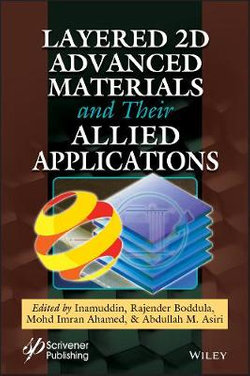The following topics are discussed in the book's fifteen chapters:
- The research status of the 2D metal-organic frameworks and the different techniques used to synthesize them.
- 2D black phosphorus (BP) and its practical application in various fields.
- Reviews the synthesis methods of MXenes and provides a detailed discussion of their structural characterization and physical, electrochemical and optical properties, as well as applications in catalysis, energy storage, environmental management, biomedicine, and gas sensing.
- The carbon-based materials and their potential applications via the photocatalytic process using visible light irradiation.
- 2D materials like graphene, TMDCs, few-layer phosphorene, MXene in layered form and their heterostructures.
- The structure and applications of 2D perovskites.
- The physical parameters of pristine layered materials, ZnO, transition metal dichalcogenides, and heterostructures of layered materials are discussed.
- The coupling of graphitic carbon nitride with various metal sulfides and oxides to form efficient heterojunction for water purification.
- The structural features, synthetic methods, properties, and different applications and properties of 2D zeolites.
- The methods for synthesizing 2D hollow nanostructures are featured and their structural aspects and potential in medical and non-medical applications.
- The characteristics and structural aspects of 2D layered double hydroxides (LDHs) and the various synthesis methods and role of LDH in non-medical applications as adsorbent, sensor, catalyst, etc.
- The synthesis of graphene-based 2D layered materials synthesized by using top-down and bottom-up approaches where the main emphasis is on the hot-filament thermal chemical vapor deposition (HFTCVD) method.
- The different properties of 2D h-BN and borophene and the various methods being used for the synthesis of 2D h-BN, along with their growth mechanism and transfer techniques.
- The physical properties and current progress of various transition metal dichalcogenides (TMDC) based on photoactive materials for photoelectrochemical (PEC) hydrogen evolution reaction.
- The state-of-the-art of 2D layered materials and associated devices, such as electronic, biosensing, optoelectronic, and energy storage applications.




Share This Book: